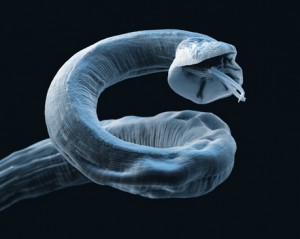
Syringomyelia is a condition where fluid filled cavities develop within the spinal cord. It is sometimes known as “neck scratcher’s disease” because scratching in the air near the neck is a common sign.
Owners often report their dog is worse at night, when first getting up, during hot or cold temperature extremes, when excited, or related to posture (e.g. preferring to sleep with their head elevated).
Affected animals may seem overly sensitive to touch, or to scratch more on one side of the neck, ear, shoulder or sternum. This is typically one side only, often while the dog is moving and sometimes without making skin contact. Some dogs, especially younger patients, develop a scoliosis.
Some severe cases may have other neurological deficits such as fore and hind limb limb weakness and ataxia.
Facial nerve paralysis, deafness and seizures have also been associated with the condition, but a link has yet to be proven.


